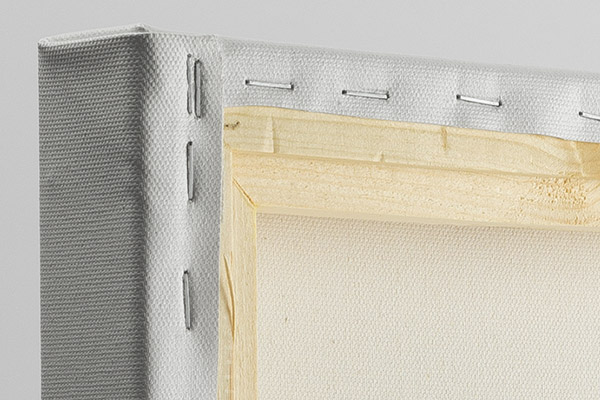Woman Bathing Wall Art

Standard Open Back
Keep your canvas print all natural with an open back.

Premium Dust Cover Back
Covering the back of your canvas creates a finished look, and can reduce dust buildup inside.
12″ × 16″ Stretched Canvas Print
About the Artwork
Woman Bathing - Item # 2577722
Images of women washing themselves are ubiquitous in the history of Western art. The female nude in general has long been considered one of the most important subjects of artistic expression, most importantly in the form of history painting, traditionally represented in classical or biblical subjects. However, in the late 19th century progressive artists spurned traditional history painting in favor of contemporary subject matter - art of the moment that represented real life. The artists featured in this gallery made the theme of the bathing woman thoroughly modern. During this period, public health officials encouraged regular bathing not only for cosmetic reasons, but also as a means to combat diseases such as cholera. As a result, more and more people washed indoors regularly. The images in this gallery by Edgar Degas, Felix Vallotton, Pierre Bonnard, and Suzanne Valadon, for example, show modern accouterments of indoor plumbing - large porcelain tubs and taps for running water. Though these prints and drawings allude to contemporary industrial developments and evolving societal expectations, they remain principally devoid of narrative. They depict anonymous women across a range of social classes, including some models who were probably prostitutes, in the intimate act of washing. These artists used the subject of the bathing woman as an evocative means to an end - especially Degas, who returned to the theme of the bather literally hundreds of times between the late 1870s and his death in 1917. Degas utilized bathers to explore the possibilities of the human form - employing multiple angles and viewpoints, depicting its shape and various movements, and reflecting the many colors and textures of the environment.
About the Artist
Mary Cassatt
Mary Cassatt (1844 - 1926) was one of "les trois grandes dames" of Impressionism, both a masterful painter and printmaker who used pastel colors in ways that few artists had dared before her. Much like her good friend and collaborator Edgar Degas, Cassatt’s paintings depict the intimate moments of women’s daily lives, and perhaps most famously, she had a remarkable gift for capturing the beauty in the smallest moments between a mother and child. Her art encapsulates the delicate minutia of such relationships, from the tender patience of one mother bathing her toddler, to the sweet affection of another kissing her infant goodnight. With her command of color and impressionistic genius, Cassatt’s images manage to convey women’s lives both authentically and graciously, highlighting the exquisite within the seemingly mundane.
Product Specifications
- Expertly Handcrafted
- 1.25" Solid Wood Stretcher Bars
- Artist-Grade Canvas
- Fade-Resistant Archival Inks
- Hanging Hardware Pre-Installed
- Width: 12″
- Height: 16″
Item # 2577722
Product Features
Elevate any room with our handcrafted stretched canvas gallery wraps. Printed with archival inks and wrapped around a 1.25” inch solid wood stretcher bar, our giclée big canvas art prints are a timeless option for any decor style or space.

Our giclée canvas art prints are produced with high quality, UV-resistant, environmentally-friendly, latex inks and artist grade, polycotton canvas. We pride ourselves on color accuracy and image clarity to ensure your new canvas wall art lasts for years to come.

Assembled in the USA, each of our 1.25” inch gallery wrapped canvas art prints is stretched and stapled by our highly skilled craftspeople. Each canvas print is carefully handcrafted to ensure taut canvas wraps and clean corners for outstanding quality and durability.

Our handcrafted stretched canvas prints include sawtooth hangers for an easy and secure installation.
Product Reviews
Related Categories
ArtMary CassattClassic ArtClassic Art by PeriodModern ArtImpressionismClassic Art by SubjectFigurativePaintingPeopleFigurativeFrequent Questions
Recently Viewed
Clear Recently Viewed?
Are you sure you would like to clear your recently viewed items?
Pricing policy: The full list price is a price at which we have offered the product for sale; however, we may not have sold the item at that price.



